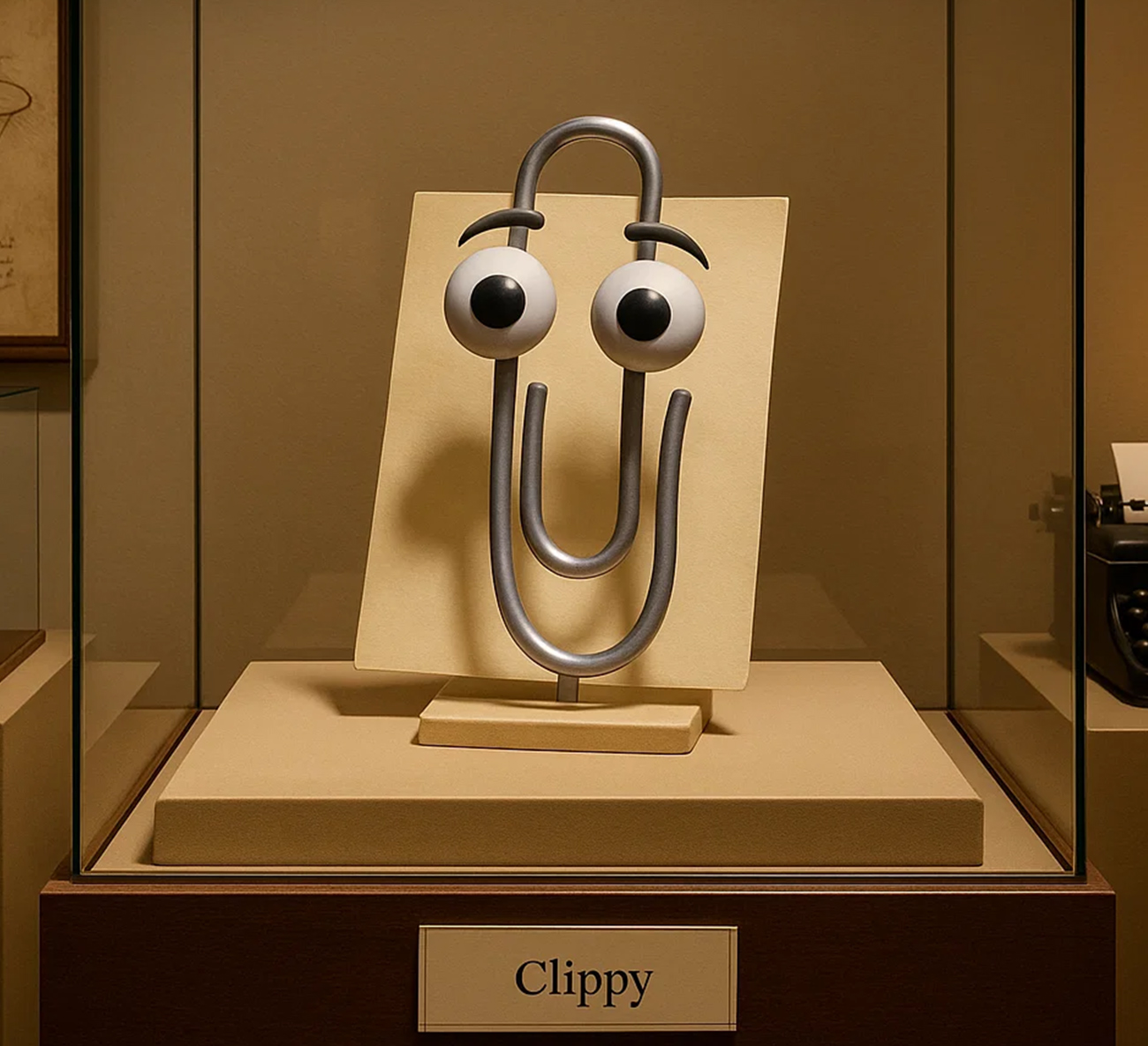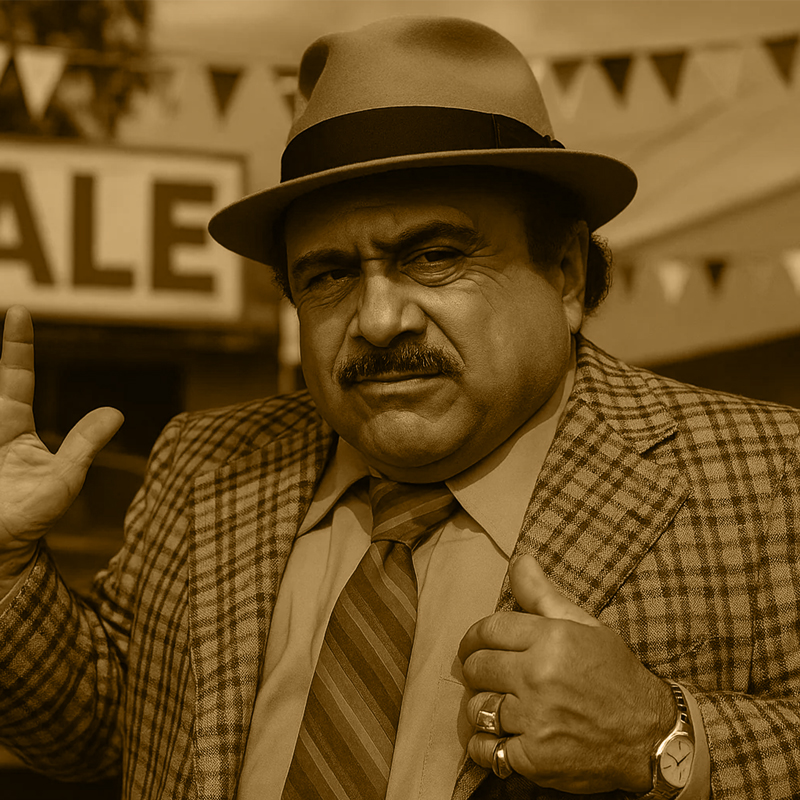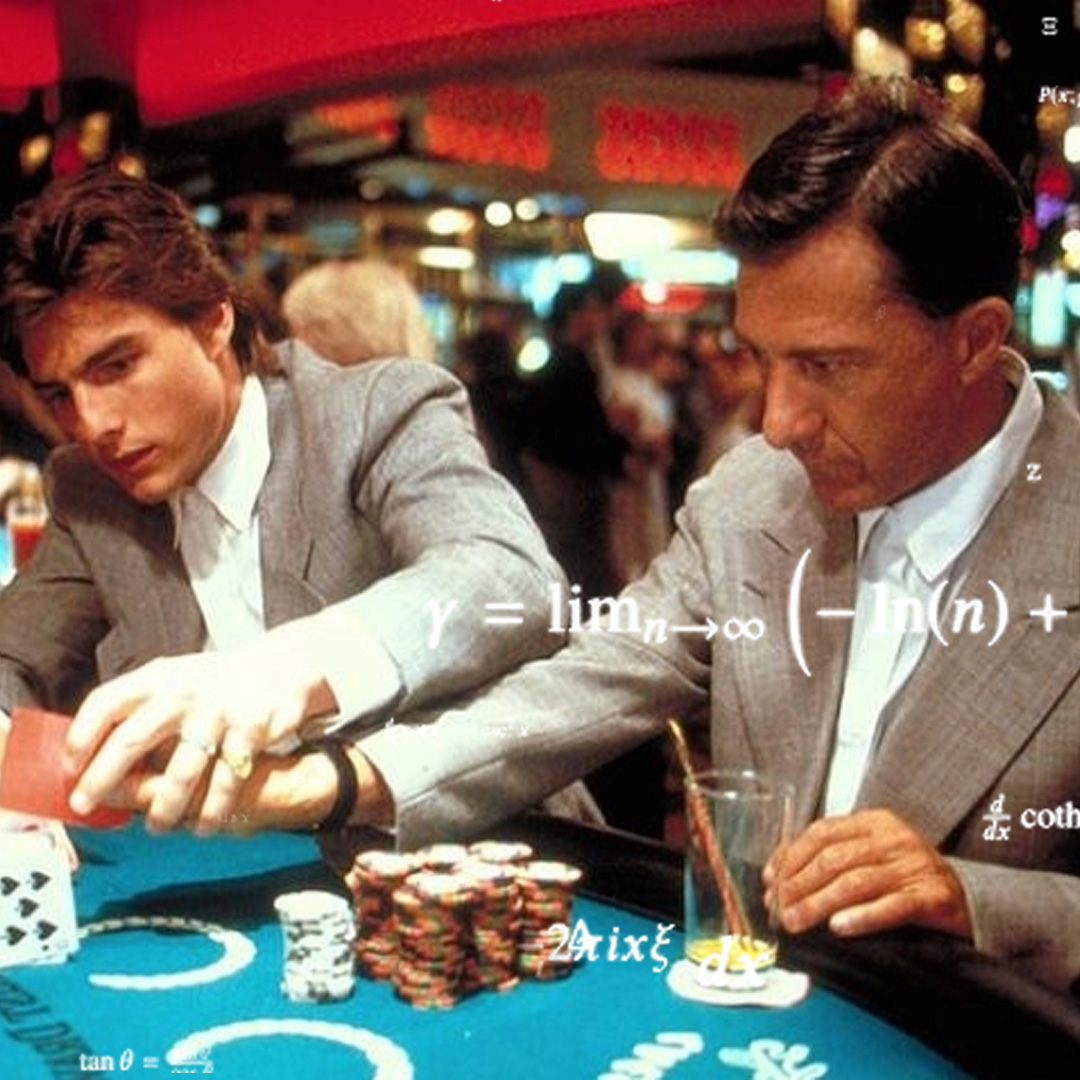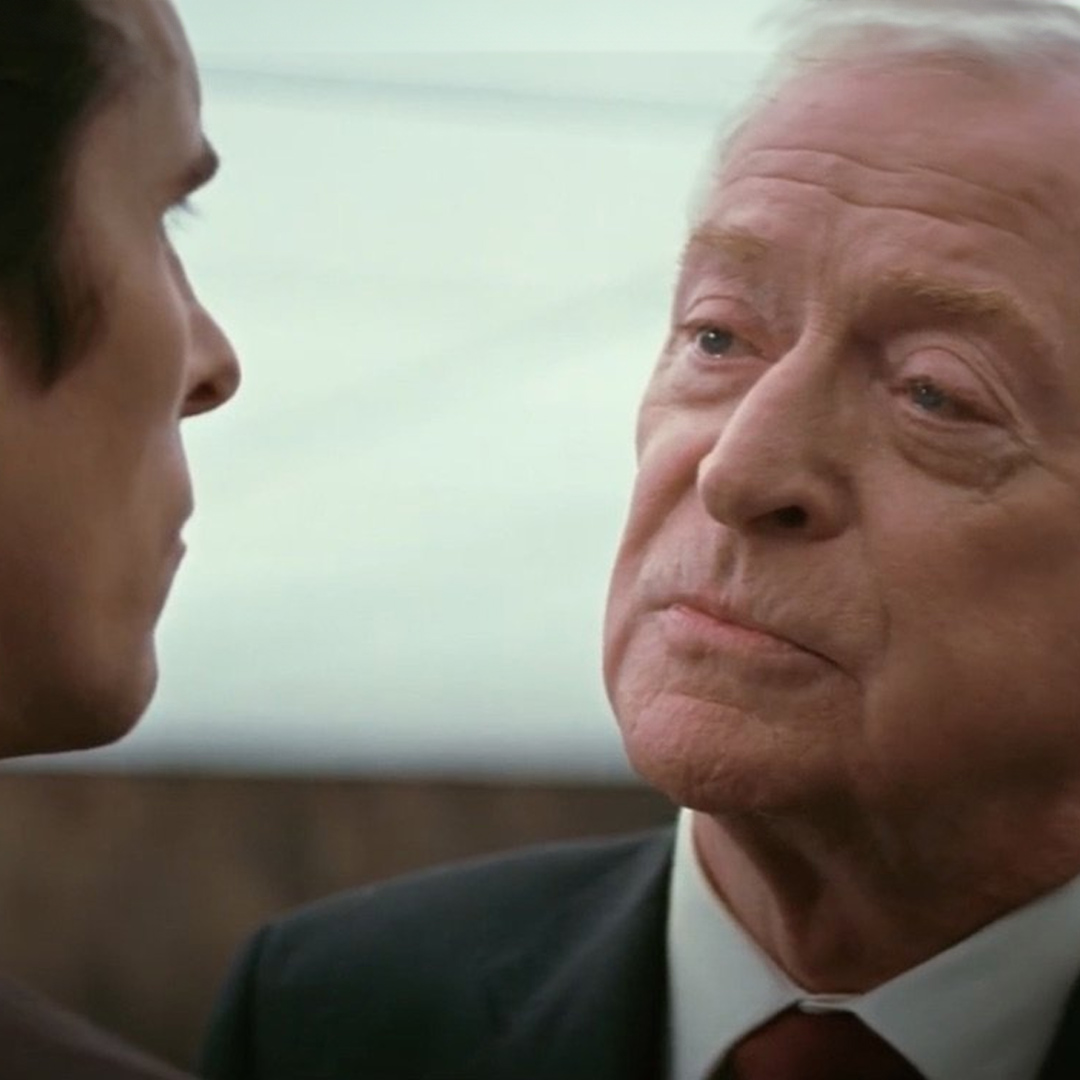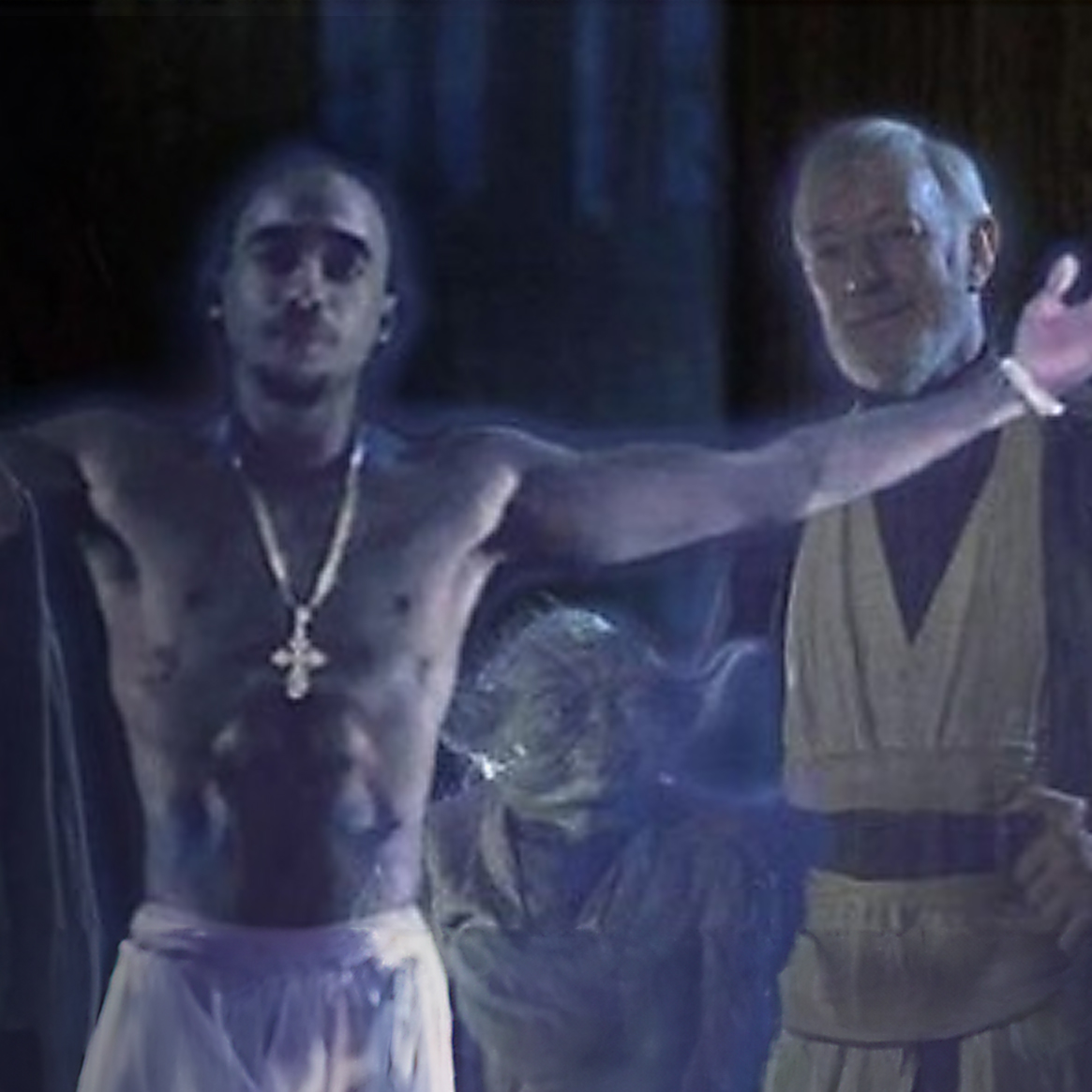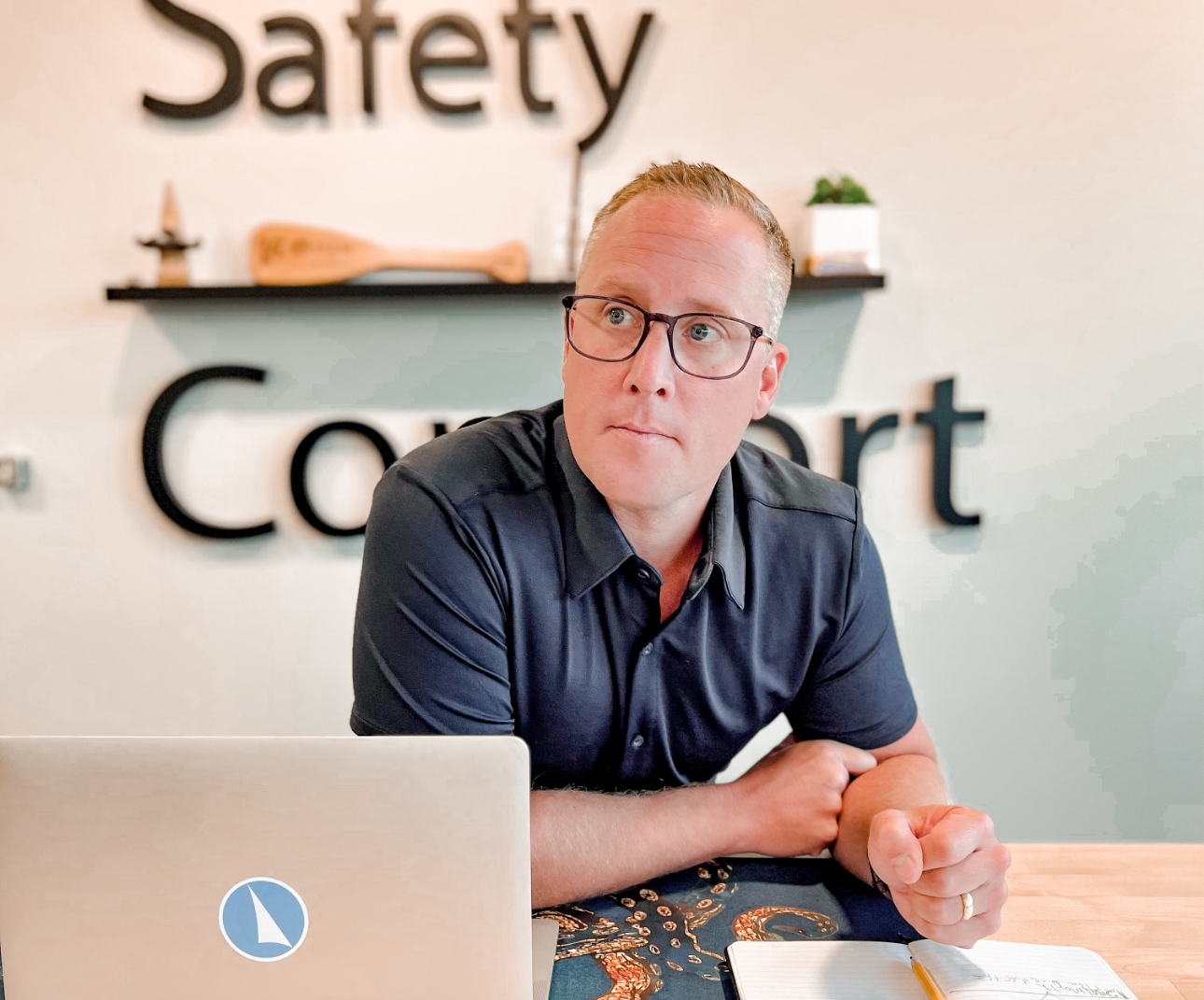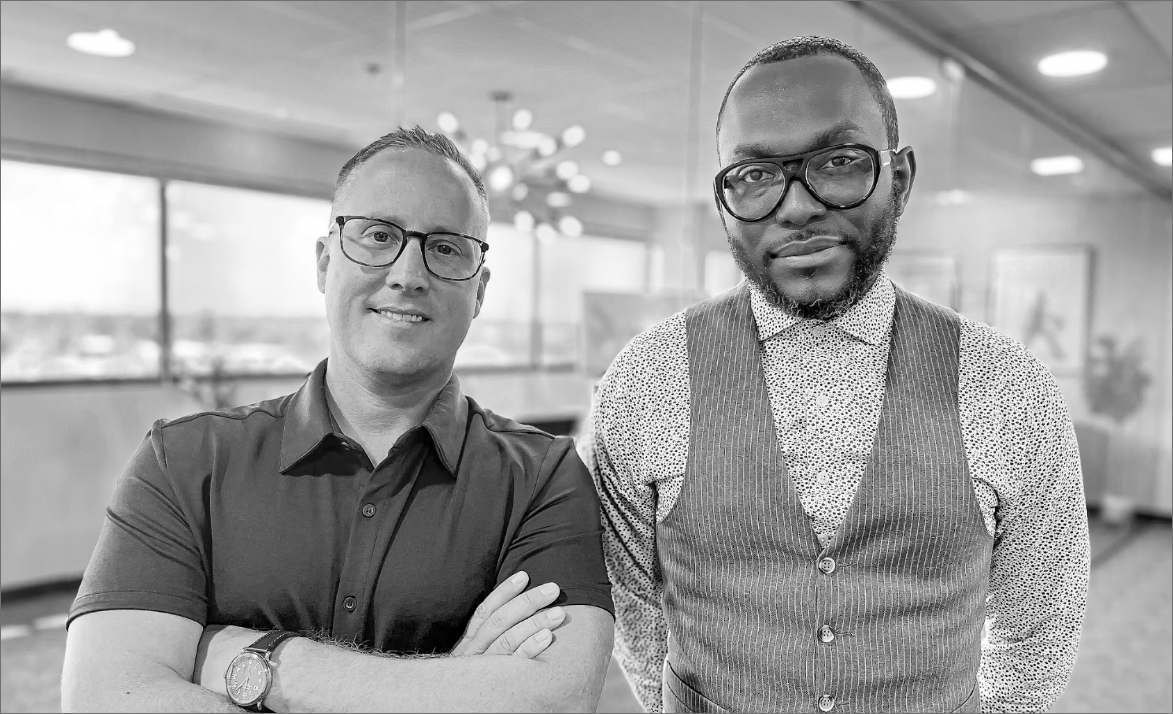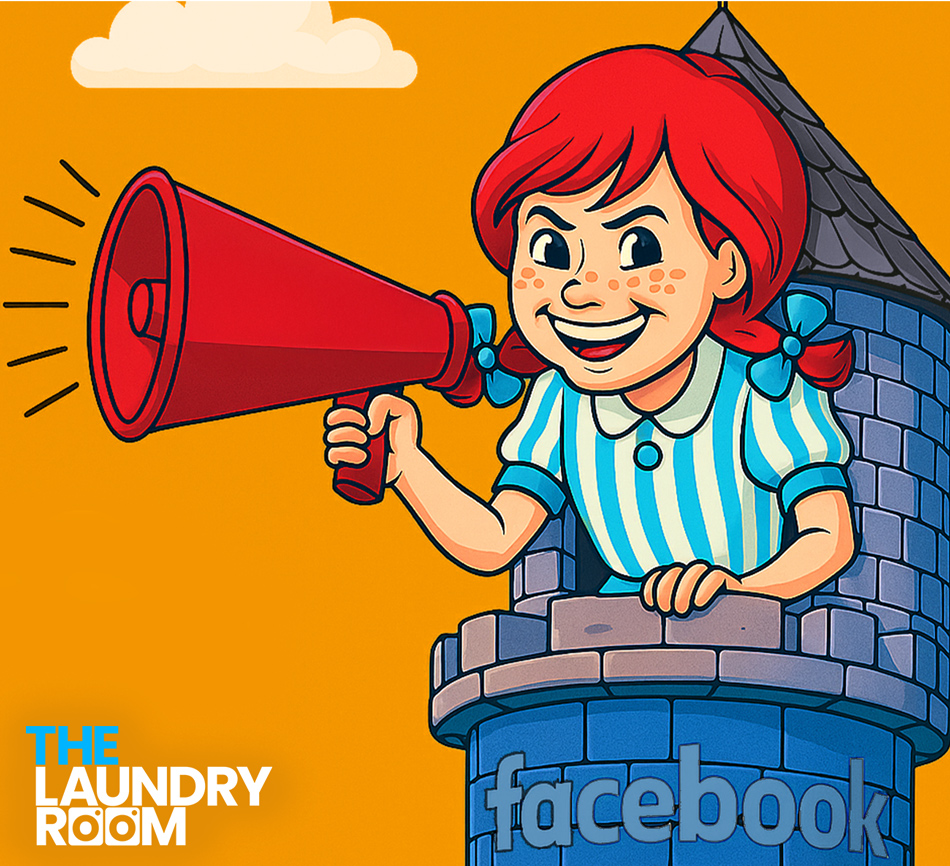00;00;07;20 – 00;00;42;05
Here we are. Back at it again. Mike 2025. Back at it, man. Back at it. Happy to be here. Yeah. I see you two men. Welcome to the lounge room. It’s a chance for us to spill the the insights, the Intel, the dirty stuff about all things good, bad, ugly, indifferent. Within the agency space, within client relationships, working with internal teams and this is, ma’am.
00;00;42;10 – 00;01;09;02
We, I think, check the big box for us in doing this ten times now. Really? Yeah, I think I told someone that we did 5 or 6 the other day. No, no, I think we are. Episode 11, season two. But the consistency piece is, is always something that I know you and I are big ones for all the differences that we have.
00;01;09;04 – 00;01;37;29
The similarities are really similar. And consistency. When you’re talking about content, we’re talking about, making a impact is paramount to that being 11 in, I guess I didn’t really realize that. And I will say it was much harder thinking about doing it than actually doing it usually is right. Like that’s usually the hurdle. It’s, you know, people, people, travail over working out at the gym.
00;01;37;29 – 00;01;59;08
But really the, the work is stepping foot in the gym. Just get in there. Just get in there. Once you’re in there. The rest kind of figures itself out. That’s what I was telling you a few months back with working out and like, setting the alarm. I was really good at setting the alarm super early. All I needed to do was have my feet hit the ground once the feet were on the ground.
00;01;59;11 – 00;02;26;29
It was awesome. Yeah, how hard it is to get those feet to hit the ground. Yeah, yeah. That’s big, that’s big. And you know, 20, 25, I think, with all of the buzz and trending topics around what it takes to commit to a resolution or to a new decision. Yeah, a lot of conversation about that right now and ways to stick to it.
00;02;27;02 – 00;02;53;12
And that’s part of what we want to talk about today, right, is how do you navigate when you should, stick with it based on the good enough. Right. Am I fit enough? Do I really need to go to the gym? Am I good enough in the work or profession? My skill. And when you’re working with clients, you have the same dynamic, right?
00;02;53;12 – 00;03;28;05
Is the client good enough for us to keep going the distance? Do we settle? Do we walk away? That is tough for any business. But certainly in, the communication or strategic marketing space, navigating the relationships and and properly defining how you sit with the client, how do you sit when they are, engaged with your team and you guys are working towards a common goal?
00;03;28;07 – 00;03;48;06
How do you have those real conversations with yourself and what the client. I think that’s come something like that comes after a long time. Like you really have to know your client. Anybody that comes to us is coming to us because they want to grow their business. So and that breaks into two categories. Everybody says they want to grow for the most part.
00;03;48;06 – 00;04;07;02
Now we’ve we’ve had a couple clients we were just talking about the other day. We’ve had a couple clients husband, wife, team, acupuncturist. They used to call us on Wednesdays and tell us to like turn campaigns down because they were too busy. They didn’t want to overbook themselves. So they are now retired and they were in the twilight of their career doing this.
00;04;07;02 – 00;04;30;23
But we do once in a great while, get clients that come to us or find their way to us without the growth. But for the most part, people are coming to us to grow and they fall in two categories. Basically, the interested in growing or the dedicated to growing and the you find out after a while what bucket you know one is good enough.
00;04;30;23 – 00;04;54;15
What is that? What does that mean to the client? Now I think for our side, like you don’t hear me complaining too much on the staple accounts that we’ve had for years and years and years. They’re on what we call cruise control. I think what’s hard for us, or any agency, really, is to turn down your your appetite for your client when they don’t have the appetite to do it.
00;04;54;18 – 00;05;18;02
So when you do stuff for clients and they’re not going to, you know, we we have a couple we give what, a dozen recommendations a year or two. And we know our batting averages, you know, one out of 12 would you say maybe sometimes zero out of 12. Yeah. And just as important, I think it’s really important that we, we provide those recommendations and those opportunities.
00;05;18;02 – 00;05;38;18
I think that’s part of why you hire an agency. You, you I think in some part, you hire an agency to be on the cutting edge of, user behavior or your markets behavior. Where are they? What are they doing? The agency is going to have insight into that. They’re going to show us, tell us, give us what we need to do to succeed in today’s in today’s market.
00;05;38;20 – 00;05;57;03
But when you get clients that come back and say, no, no, no, no, no, no thanks, no thanks, I’m good, I’m good, good enough, we’re good enough. We don’t need a new this. We don’t need another that we don’t need to try that. What we’re getting now is good at does, you know from a I suppose from a, president standpoint, I’m like, all right, no problem.
00;05;57;05 – 00;06;19;26
You guys are happy. We’re happy. You guys keep paying your bills on time. We keep delivering valuable work to you guys. Yeah. Awesome. And the flip, though, when we see the opportunity, I think it’s hard for us more often than not of man. Why aren’t they? Well, we’re not playing it right. We’re not doing it right. We’re not showing them good enough of what we can do.
00;06;19;26 – 00;06;44;25
And I think that’s where it maybe gets a little frustrating for an agency, especially when, like for us, we’re into it. Right? Like we really do want to grow these. We want great case studies. Yeah. What are we in it for? We want to scale businesses to to brag about. Well and there’s yeah impact right. And and being able to to align definition with client with your team.
00;06;44;25 – 00;07;23;22
What is impactful work. If you are a CFO or head of money flowing in and out of the agency, you might get a different answer. Hey, that client pays their bills on time. Every invoice, it’s, predictable, recurring, recurring revenue. Don’t mess it up. Yeah, and for a business, you need that. Yeah. The downside to your point, certainly for a team of creatives or people that are doing trend setting work, you want inspiring projects.
00;07;23;24 – 00;07;49;08
So when you’re in the hamster wheel, you can become complacent or dull. And so you have teams, you have this internal conflict now where some of the business, consideration, the boxes are being checked. Hey, we can count on this account for the revenue that we want, but for the team that’s actually trying to do some creative, cutting edge work, something new, they’re underwhelmed.
00;07;49;13 – 00;08;16;15
And it’s a why do we work with these guys again? Why are we. Yeah I was there a great client. So that that definition of good enough is is important now. Hey, how lucky are you as a business? Or as someone responsible for an account if you have a predictable relationship like that. Oh, yeah, I know, yeah, you you’re you’re always positive, you know, you’re going to be this month.
00;08;16;15 – 00;08;33;07
You know, you are going to be next month. I mean that is yeah, that’s a great piece of mind. And I think getting to that like that’s probably like what first base. Right. Like when you set out in certainly for these clients that we’ve had for a long, long time, we were the first digital marketers, digital marketing that they ever did.
00;08;33;09 – 00;08;59;17
Right. So just getting them to a positive ROI was a to them, a home run to us, a double, you know, and, you know, for another conversation. But that definition of ROI, yeah, we’re learning there are different definitions. Yeah, depending on who you’re talking to. Because for some of us and I think for all of us as consumers, how you value a return will vary.
00;08;59;19 – 00;09;26;12
Right. And the when we talk about growth within a business, our knee jerk is bottom line. What is the money in? What is the money out that is interesting in ROI? I think there’s money time or speed in quality, right? And sometimes I know for me I go into the money, I’ll always write like, hey, how are we going to get this guy a dollar five back?
00;09;26;14 – 00;09;49;21
But you’re right. I mean understanding it and to that to on the good enough when you when you play the good enough game and you’re exposing yourself to not knowing when it’s not good enough anymore. Right. So it makes it puts you in a real hard spot if you’re in the good enough category or you’re getting the vibe from client that it’s good enough, you take the pedal off, man.
00;09;49;21 – 00;10;05;04
That’s when you get the rug pulled out from under, hey, you guys don’t really get us anymore, and we’re really trying to do new things and you guys don’t really bring anything forward. And then we’re whining over here. Well, oh, we try to pitch this and that and this and that. And you guys always said no. So. Yeah.
00;10;05;04 – 00;10;36;26
And, we’re I think we’re living it right now in being better at identifying when you should settle that where the client is. You got a good enough. Yeah. Even though it might differ from what you see, what you think, what we think at the agency. Totally. That’s a big challenge. And the, being able to clearly acknowledge, I think, verbally between you and the client with the team, who’s, who’s setting the vision for that, right?
00;10;36;27 – 00;11;05;08
Who’s set, who’s setting the vision for what good enough is. And that’s how you can do a better job of managing expectations. Anytime we’ve lost an account or where we have, been naive or blindsided by client going in a different direction, it’s usually because there was misalignment on what good enough meant or what what good continued to mean for them.
00;11;05;08 – 00;11;33;03
Good enough, I think in in business terms, good enough is probably not a good, mantra or, mindset. I mean, mindset, right? Yeah. I mean, the I’m sure there are a lot of different opinions about why you get into business, right? Right. Why do you start a thing? Why do you go into a certain profession. And I’m a product of that.
00;11;33;03 – 00;12;06;05
Certainly. Scratch my edge creatively. There are reasons why you do things that go well beyond money. Right? Or, a net positive business in terms of financial. What clients though, when as a as a partner to a to a business knowing how they define that, knowing when we’re in trouble if we’re not sending over new ideas, new ways to create efficiencies, how does client perceive that?
00;12;06;07 – 00;12;31;05
Because we have clients who, if you call them more than a couple times a month, it’s a problem, right? We don’t want to hear from you. This thing is humming. Don’t mess with it and talk to you next month and we can leave that conversation deflated. We’re client is high fiving. We’ve had the opposite happen as well, where we think things are going well and we are.
00;12;31;08 – 00;12;54;14
Hey, we got this client in a great retention mode. And meanwhile, no client is not seeing what they need to see in that mindset of making a bet. We’re not good enough. It’s yeah, we’re hitting our KPIs. We’re hitting the things we talked about when we first started the engagement. But we’re not we’re not satisfied. Yeah, that’s a really good point, Mike.
00;12;54;14 – 00;13;12;20
I think some of the time, some of these clients that we get, when you think about the engagements that we find ourselves in, media engagement, right, we’re going to run ads. We’re going to run some Google ads for you. We’re going to run some display ads for for you. We’re going to do some social ads for you.
00;13;12;22 – 00;13;37;04
We’re going to also control what these landing pages do. Okay. For the most part, that’s what we’re trying to do. And I think of like most recent couple that we’ve got, it was really a viability ask, hey, we’ve never done search. Let’s try this and see if it works. All right. We estimate out what we think works means, hey, you guys do this.
00;13;37;04 – 00;14;00;08
We think we can yield this many. You do this. This. You know, you spend this much, we think we can yield you this many Amc+. Yeah. Or at the very least, we can drive this much traffic. This is what the costs are. So how many clicks we’re going to get this. How much is going to cost? I think what makes it difficult for us is when we get into these, what is good in those things changing?
00;14;00;10 – 00;14;21;08
It was real quick that they weren’t. This was not let’s test the viability of search. This was we need to generate what was eight new customers this year. What are we going to do and where? I think we get caught sometimes, and I don’t think we’re the only ones, is that we’re we went in there and we accommodate.
00;14;21;08 – 00;14;50;00
They ask what what is good for them. It would be presumably to find out if whether it is or isn’t, just find out if ads are viable for them. Search is viable for that company. That wasn’t really all that they that’s not what good was good was to them not to find out if search was viable. It was for them to generate marketing qualified leads that they could close and generate new business with.
00;14;50;03 – 00;15;15;14
And when those things change, I think it we find it difficult to stay in our lane because at one hand you’re like, all right, well, we’re on for this engagement. This is all we’re here to do is run these search campaigns and make them a badass landing page that hopefully converts. That’s not all the other things that could be going on or that we could be doing, but we weren’t contracted for it.
00;15;15;14 – 00;15;35;05
So then when they come back and it’s not yielding what they think or it’s not moving as fast as they think or, you know, our numbers were high five and over here, but they were expecting to close new clients by this time. And we’re kind of handcuffed to say, all right, well, we could do, make it make it up.
00;15;35;05 – 00;15;56;04
We can do more video content. We can do emails. We should be going to trade shows with them and getting Twitter X going while they’re there. And all these things, but it makes it really hard, I think, for client two because clients like, well, I’ve already I’m already paying these guys 100 grand. They want another 100. And they haven’t even got me my first 100.
00;15;56;06 – 00;16;24;19
Yeah. In the, in the spoiler to all of this, how do you fix that that, communication upfront of being crystal clear. But then after the engagement commences, the regular check ins, the regular reminders, you know, let me tell you what I’m about to tell you. Let me say it and then let me tell you what I told you is what I told you still relevant?
00;16;24;22 – 00;16;44;17
Is it still valuable? Does has the business changed? And that’s where I think that creep in comes in from client. That’s good enough because it it’s not. But maybe we get fibbed to a little bit like let’s just keep it going. I don’t want to add more to my play. I don’t want to have any more money. I got to go get more money and going to go try to get more money.
00;16;44;19 – 00;17;06;17
Yeah. So you guys just keep doing what you’re doing. I’m going to cross my fingers over here. And human nature for all of us to be as well, certainly in our society. To be greedy. Right. So it’s, here’s what I’m hoping to get. You get it, but then it’s. Well, that’s not good enough. Well, it was good enough when you didn’t have it.
00;17;06;20 – 00;17;33;20
Yeah, but now you have it and I want something else. And so that that, for you as a partner, as a firm, an agency that is working with this client, being able to know and detect those signs. All right, we we hit this new, level. And what we’re doing, is that good enough? And using very layman.
00;17;33;20 – 00;18;06;08
Yeah. Right. It. Would you do this again? Would you do it again? What would you do different. Yeah. Now balancing, like growing or evolving goals with reality is I know, I know that that’s another area where we often find ourselves having to juggle because a lot of clients will have consumers will have unrealistic expectations. Yeah. Hey, I want A5X my business and I want to do that in five months.
00;18;06;10 – 00;18;26;17
And I want for ten grand. Yeah. Because once once you start asking the meaningful questions of well, what what is five x, what’s x? Where are you at now? And okay, we put a five in front of that. What does that mean? And when you start really digesting, a good partner in a client is being realistic. All right.
00;18;26;17 – 00;18;50;24
Yeah. Here’s what that means. Here’s we agree or there’s some acknowledgment on what the investment needs to look like to achieve that. What kind of time is required. We get in trouble when there’s a misalignment or reality or we deem reality. Hey, we’re we can’t help you with that. We’re not a good fit. So knowing when to say we gotta walk away versus.
00;18;50;24 – 00;19;13;23
And that’s super hard to I mean, certainly for an agency like you don’t get in the business to like fire clients or to. Right. Hey, we can’t like our in nature as we’re trying to figure out a way to to help you to to make this sweeter, get you an ROI in one of your ROI categories. So I do think that makes it really, really difficult.
00;19;13;23 – 00;19;40;24
And in ego this is they said this about hires, I think I can’t remember who was talking about this, but when you make a new hire, you know the adage slow to hire? Oh, yeah. Quit talking about that. Oh, yeah. Well, the ego is the reason that you’re quick to hire and slow to fire because you meet someone and you trust in your instincts and what they said and how the interview went.
00;19;40;24 – 00;19;59;09
And you’re like, get them in here. This is going to be awesome. Then they get in here immediately and they’re not awesome. But you’re so into your own feelings and your ego, your own ego that you’re not admitting to yourself that you made the wrong move. So you like try to patch, try to patch on and on and on.
00;19;59;10 – 00;20;32;03
Right? Same with clients, right? Like we do the same thing. Are there clients that we’ve taken on that we shouldn’t? I have absolutely. Yeah. Absolutely. Yes. Yeah. Did we have to did we try to keep them after we made that mistake? Heck yeah. Absolutely. Yes. Yeah. So getting in those and and getting in those real conversations with your clients, I think that’s one thing that we’ve been lucky enough to be fairly good at over the years of, of really talking about the things that mattered, not me not shying away from the elephant in the room.
00;20;32;03 – 00;21;05;10
I think it’s really easy to like, go through your task or go through your motions and okay, dashboard day, let’s walk through the dashboard and look at your Amc+ instead of like, hey, where you guys at? Where are you going? Is this viable? Is this going to work for you? Let’s talk about some of those signs, too, because, you know, we have the we certainly have the scars and the, the t shirts to, to testify to that when you have, any type of toxic interaction with the client.
00;21;05;10 – 00;21;33;21
I know toxic is a buzzword that’s often misused, but, it is on agency to know what your strengths are. What do you what is your team really good at? What are you really good at delivering? If client doesn’t value that or doesn’t agree with that, and instead it’s a, you serve as a punching bag, that might be a sign that you need to make a change, right?
00;21;33;23 – 00;22;03;03
Because the the biggest commodity that we have are the people that are working on the team. And that is that is what we are offering to our clients. And if we lose our footing, one of our team or our our team in general loses our footing at being an expert, being a thought leader, then we are now competing against some of the cheapest labor in the world.
00;22;03;06 – 00;22;25;27
As soon as you lose that, we just become these kind of take order takers, so to speak. Yeah, we can’t compete. Yeah. So protecting the, the integrity of the, of the agency so that there is acknowledgment from the client that. Yes, these are the guys that can help. Now, there’s a lot of work that the agency has to do to maintain their right.
00;22;25;27 – 00;23;09;20
You have to do the work to create the confidence to maintain the trust of the client, perform warm. Right. Obviously, you got to perform and make sure you’re you’re delivering on what we talked about. But when there are signs that client does not appreciate that, that’s when you got to take a hard look at what do we need to protect within our walls to make sure that this doesn’t become, systematic or cancerous, to not just that relationship with the client, but now the work we’re doing in other areas of the biz, and that is, I think, hard for an account team or account person sometimes because you are so dedicated, you’re so passionate
00;23;09;20 – 00;23;33;14
about winning for the client. Yeah, right. Is so much work to get them. Yes. You don’t want to lose. Yes. And having that balance of why we do that, how many times we pour in. Oh yeah. Way about way over because we got them to this point. Right. And that’s the value. You know, I tell it, you know, if you’re a client, you hold a ton of value if you’re paying recurring revenue to your agency.
00;23;33;21 – 00;23;57;28
Yeah. Straight up like and it’s maybe there’s some inside baseball, like if you’re paying an agency recurring revenue, odds are that agency will do anything to keep you like in, you know, extra this more of that. Like they’re going to do whatever it takes to to make it right, make it good. And I don’t know if clients really understand that.
00;23;58;00 – 00;24;22;00
And I don’t think agencies necessarily do a good job giving that vibe either. Yeah. Which is what we’re talking about. When is good enough good enough and when do you say, hey, you know, I’m sorry we tried our best. Yeah. I’ve never done that. We had one bad one years and years ago when we first started in one, this guy, like, screamed, screamed at one of our folks and swore he was saying swear words.
00;24;22;00 – 00;24;42;15
And it was just over the. It was too much. It was. Yeah, I don’t know what you call it, but it was just beyond the line for us. And that was it. That was the only time that it got that bad. Now I’ve wanted to I’ve wanted to say heck with this. But, you know, I, I we don’t and it doesn’t help us sometimes.
00;24;42;16 – 00;25;15;10
My favorite analogy and I, you know, I know you and I over the years we joke a lot about lawn care. So there’s a lot of references we, we made to lawn care. When you have a guy that is doing your lawn maintenance and it’s a no brainer, you don’t have to think about it. You know that that company or that guy’s come in every week, every couple of weeks, you get into a hamster wheel in the first part of the engagement, maybe your yard was pristine.
00;25;15;13 – 00;25;57;12
They’re doing all of the extra stuff, and then over time, it loses some of its pristine. Right. You got patches they didn’t cut here. They didn’t blow off your driveway the way they used to. And you find yourself as a customer in a hamster wheel of good enough and if that team if that that lawn care provider isn’t doing the work of checking in and and staying at the cutting edge it you find yourself when you lose that customer said what I do now and all the goodness that might have happened before that’s gone.
00;25;57;13 – 00;26;27;19
And you got you’re you’re going, why do we lose him? I don’t know. Yes, yes. This was the and you know, this is why I like being accountable to measured outcomes. Yeah. This is and the ROI. And when I say ROI I mean dollars because that is black and white. I was telling, Castle the other couple weeks back, you know, we got the office, we get the office outfitted for Christmas, and they bring in the flowers and the wreaths and stuff.
00;26;27;22 – 00;26;44;23
I don’t know what it was, man, but they set this stuff up this year, and I’m like, is this our stuff? They go in, they store it, they bring it in. And in November they set it all up for us. And then they come in at that in January and pack it all up and store it, and then they’ll bring it back to us.
00;26;44;25 – 00;27;09;01
I’m looking at this stuff this year now. We’ve been doing this 3 or 4 years now, at least this year. Man, this stuff hit me. Different wreaths, centerpieces. We got a they got a couple trees up, a couple wreaths. For some reason the blue ain’t hit me the way it used to. The the decorations that they put in, I’m like, man, this kind of giving me like, a 80s vibe or something.
00;27;09;01 – 00;27;31;01
I’m not liking this. Why? I remember year one. When I saw it, I was I walked my mom through the office and said, look, we’re celebrating Christmas in the office. I was so excited about it and thought it just lifted the whole space. Yeah, I can’t explain to you what it is that changed, but I’m on there on the bubble.
00;27;31;03 – 00;27;49;06
Either we got to get new a new vendor to do it. They’re going to have to give me some new ideas to spice up. And if they don’t, right. Like, how many more will we go? Yeah. Before we’re like, guys, thank you for this, but we’re not going to do this anymore. And they’re going to say over there at the at wherever the place is, what do we do?
00;27;49;08 – 00;28;06;14
Yeah, what the heck? This was going so good. They were client for five years. Now they’re gone for no reason. Yeah. Well, and you know, that’s that, you didn’t check in silent quitting, you know. Are you are you kind of in that silent quitting mode? Yeah. So for them as a business, protect yourself against that. That’s hard.
00;28;06;14 – 00;28;31;01
You may not be toxic right now. You’re interacting with them when they’re setting it up. But the unrealistic expectations, right. They you haven’t done we haven’t done as the customer the work of providing clarity, explaining the feeling. They haven’t maybe done a good job of pulling that out. Well, in mining for hey, how do you feel about this?
00;28;31;01 – 00;28;48;03
Well, said, Mike, because you’re you’re speaking like, to be a good client. I’m. It’s funny, when I’m on the receiving end of it as the client, I’m going. I ain’t got to do that. And they came in here the other day and packed it up and they walked by and I, like, made eye contact. And she didn’t even make eye contact.
00;28;48;03 – 00;29;05;13
Okay. It’s not a big deal. I mean, it was a young I mean, I’m sure her job is to go and pack up the stuff, but if they would have had someone come in and peek in and say, hey, how’s it going? How was the holidays? How would you like the office this year? Do you like the just that little thing?
00;29;05;16 – 00;29;25;14
Are we still providing value and setting this up? I might have thought differently about seeing it. That is a good point. Now, when you’re on the client and you’re expecting them to come and do that for me. Yeah. When you’re on the agents, when I’m on the agency and I’m saying, well, why didn’t you call me? Why don’t you talk to me about how you were feeling about the I didn’t know who to call.
00;29;25;16 – 00;29;56;09
Who was I going to call? Yeah. I don’t have a I wouldn’t know in this case is a little different example, but it’s not in the position to to be called or to call. You’re done. I’d call that certainly navigating that gray space, because when there is not the work of, some cadence of communication. Right. That company is not reaching out to us in July and saying, hey, you’ve had that stuff for a few years now.
00;29;56;16 – 00;30;17;21
Time to upgrade. We got some new stuff. There’s some new things you should be considering that would elevate the space. So as a as a agency that is part of the job, right? Being able to do that check in. Here’s something new. And that’s why we do it right. There is a level of expertise that we’re trying to bring to the table.
00;30;17;24 – 00;30;36;03
If a client is unrealistic in how they receive it or what they think they’re going to get from it, it might be a sign that you need to have a different conversation. Yeah, but navigating that gray area of communication isn’t happening. Or, you know, mind reading is an expectation. Well, that’s tough. And this is what I was telling.
00;30;36;07 – 00;30;57;17
So if we had clients in and out of here all day long, every day, and you know, 14% of the clients that came in mentioned something about the decorations in a positive light. And then we attributed that to a dollar amount and said, all right, this has this percentage. Like if we got real scientific with it. Yeah. We’re not.
00;30;57;20 – 00;31;27;07
Yeah. No one is right for them unless you’re doing Coca-Cola stuff and Apple stuff and you’re everywhere. You’re eight feet away from everybody. We’re not invest in that kind of effort into the impact of Christmas or holiday decorations. And it it does. It makes it really hard to to stay on top when that ass becomes more creative or unmeasurable in nature, makes it much more difficult for agency to act or to, to to look around the corner for client.
00;31;27;10 – 00;31;58;00
To, to solutions I think to that problem certainly navigate in the gray area one the being intentional with a check in on not how are we doing that status. Right. Right. What else are you trying to achieve. How are the goals evolving. What is keeping you up at night that we haven’t talked about? I think to it, it’s easy to get into a habit to not ask how they’re feeling about what’s happening.
00;31;58;07 – 00;32;22;26
Yeah. You’re just reporting out on these numbers. In the end, it’s like, so what do you think? Yeah, that ain’t it. Yeah. It’s where’s your head at. What’s Q3 look like for you. What is your mission. And then number two you know having enough intelligence about your client to go and give recourse to give the right. Hey, we haven’t talked about this, but here’s what we see around the corner.
00;32;22;29 – 00;33;05;25
You should be thinking about this because then it does help to mitigate the complacency or client feeling like good enough isn’t good enough anymore, right? So and I think it’s easy for business to get in that hamster wheel of. Yeah, clients been with us forever. They’re not going anywhere. That is a trap. That is a trap. And so being able to implement strategies or, tools that allow you to keep the pulse of the conversations that aren’t happening all the time, or outside of the scope of engagement that you’re in is super important.
00;33;05;29 – 00;33;39;14
And that, that feedback loop or our ability, I know is the area we’re trying to get better in is doing the the look back of here’s what happened with engagements that didn’t go the way we thought or we do about it. What are the things that we need to implement so that this happens less the next time we have a similar situation with new client, and doing that work is so important to knowing who you should be working with, right?
00;33;39;14 – 00;33;54;10
Knowing upfront, I mean, it’d be be great if we all had a crystal ball and knew up front, this is going to be a great client. They’re going to stay with us forever. They’re going to love us, give value. But the fact is, no, you got to do that work week to week, month to month. Yeah it changes.
00;33;54;12 – 00;34;16;26
Yeah. And navigate the change. And so that good enough part of what we and it’s funny clients we’ve had for more than a couple of years their business is different than it was when we first started with them. And so of course the ask is going to change or the business requirements is going to change. We’re a different company.
00;34;16;26 – 00;34;43;14
We’re a different agency than we were two years ago. Seven years ago, 15 years ago. Yeah. And so to make sure that that is reflected in the conversations, that is it’s a great tool to have when you’re, you know, dealing with that good enough concept. Is client good enough. Are we good enough now, you know to get philosophical.
00;34;43;17 – 00;35;04;09
No, it’s never good enough. Right. There’s always something better. Hey, there’s always, opportunity for us to be better, to be doing something that we haven’t done before. And same with the client. But getting that alignment is certainly important. Because if they don’t believe, it doesn’t matter if you do. Yeah. And staying on get it off the get and then keeping it.
00;35;04;15 – 00;35;29;06
That’s the other piece of it. It’s never the cynic I think is Simon Sinek. That was like, hey, if you brush your teeth once, it’s not going to do anything for you. You got to do it at least twice a day. Every single day. Yeah. If you tell your spouse, I love you one time when you get married, probably not going to be enough, right?
00;35;29;08 – 00;35;57;16
It’s the same with this. Like, you got to stay lockstep, ongoing, constant work. Daily, weekly, monthly. That keeps everybody on track with what what the changes in the environment are. Positions change. You lose clients. Clients lose clients making them open up new things that they weren’t willing to do before. Absolutely. And if you’re not in with that right, and you’re you’re in your lane just skipping down saying, oh yeah, we’re doing good enough, right?
00;35;57;19 – 00;36;25;10
That’s when the rug gets pulled in. Man, that’s a horrible feeling. Yeah, it is horrible feeling. When you hold the position that you think you can really impact businesses and then you’re dismissed. But when you think you’re holding all this, I. I’ve even shown you my best stuff yet. That’s a bad, bad spot to be in great commitment for us and those who are listening, you know, know the difference between when you should settle in, stick with it.
00;36;25;12 – 00;36;46;29
When you have a client only, you should walk away. Yeah. And being committed to that process. Yeah. Knowing nothing worse than thinking it’s one thing and it’s the complete opposite. Right. So I know we’re committed to that. Episode 11, man. Commit to this. We’re not just interested in it. We’re committed to it. Dedicated to dedicated.
00;36;47;00 – 00;37;04;10
Kudos to the team here for keeping us and hold us accountable to coming in here and recording. So we’ll keep this going and hope you guys enjoy listening to these as much as we enjoy making. Yeah. Aaron the laundry next time echo base.
